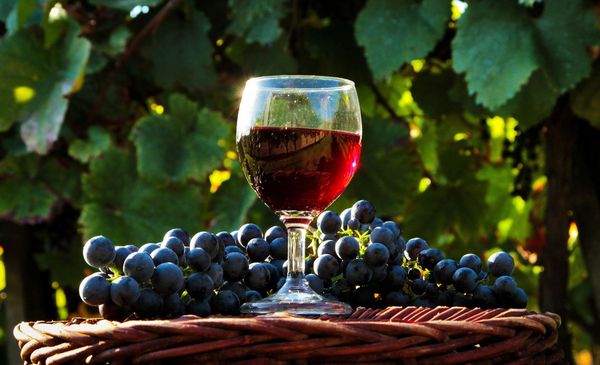Winemaking is now being reborn and experiencing a new era. People tend to increasingly consume natural products without chemicals and additives. Wine is no exception. Therefore, they prepare an alcoholic beverage independently of the ingredients donated by nature, including those from Far Eastern grapes.
Table of contents
Calories and benefits of homemade wine
Dietitians usually do not recommend drinking alcoholic beverages, including wine.But what if it is homemade? The caloric content of such a product depends primarily on the method of production. You can define it as follows:
- Dry wine is considered the lowest calorie. 100 grams of the finished product contains only 60-80 Kcal. All this is due to the fact that in the process of sugar production the minimum amount is added and in the process of fermentation all of it is “fermented”;
- semi-sweet wine differs significantly by this indicator. In 100 grams of it will be from 100 to 150 Kcal. In the manufacturing process, a significant amount of sugar is added to the product, which is very important when calculating calories;
- fortified home-made wine calorie-inferior unless liqueur. Fermentation is stopped in it by adding alcohol, which in itself is a very high-calorie product. Because 100 grams of ready-made wine contains about 250 Kcal;
- white wine for this indicator is like a dry one and contains only about 100 grams 90 Kcal;
- homemade port wine is very tasty, except that when it is made, not only high-calorie alcohol is added to the product, but also sugar. Because of this, 100 grams of port wine can contain 170 kcal;
- Liquor is the leader among home alcoholic drinks in calories. 100 grams of this drink contains as much 350 kcal. After all, the product is a mixture of alcohol and sugar, and the aroma is created by adding fruit. That is why liqueurs are strictly forbidden for consumption by nutritionists.
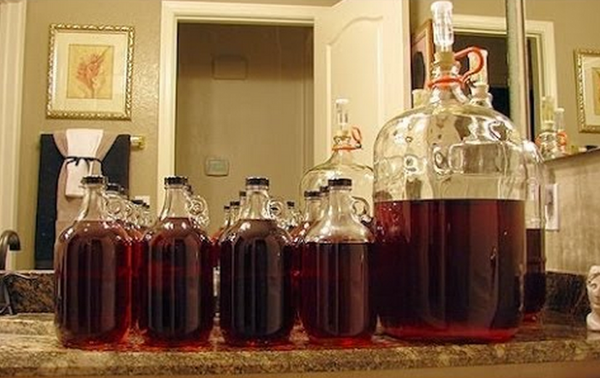
Only 30 grams of this drink before dinner will increase the secretion of gastric juices, which contributes to the rapid digestion of food and its assimilation. Small doses of wine dilate blood vessels. In addition, it is rich in vitamins A and B, C, E, PP, contains in its composition a huge complex of trace elements (iron, iodine, magnesium, potassium, and many others), organic acids.
In house wine no preservatives. In view of this, in case of therapeutic nutrition, if wine consumption is foreseen, then it is best to drink exactly the home product.
Selection of varieties for production
Far Eastern grape varieties that are very good for making wine, adapted to the harsh weather conditions. Many of them are wild and wild, with their inherent high frost resistance.
For wine making, the best are considered to be:
- Express;
- Olesya;
- Seaside;
- Amur.
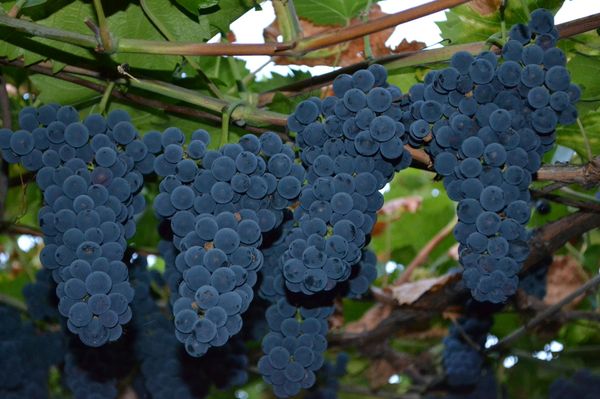
Of these, you can get the wine is not just high quality, but also with a wonderful aroma. Fresh, all these varieties are characterized by a very sour taste, because they are practically not consumed. But in winemaking, this disadvantage becomes an advantage. Finished product possesses fine sourness.
Separately, it is worth noting the Amur variety, which, in addition to its high acid content, also contains many sugars in its composition. The bush itself grows very quickly, is distinguished by high yield, the brushes are large, and the fruits have the correct rounded shape and beautiful gray color. The berries have a lot of natural yeast, which is very good effect on the further fermentation process.
Preparation for production
For a novice winemaker, it is useful to find out what tools and devices you need to stock up on and where to start the cooking process.
For this useful:
- large capacity glass jars;
- tubs and barrels of oak;
- stainless steel tanks.
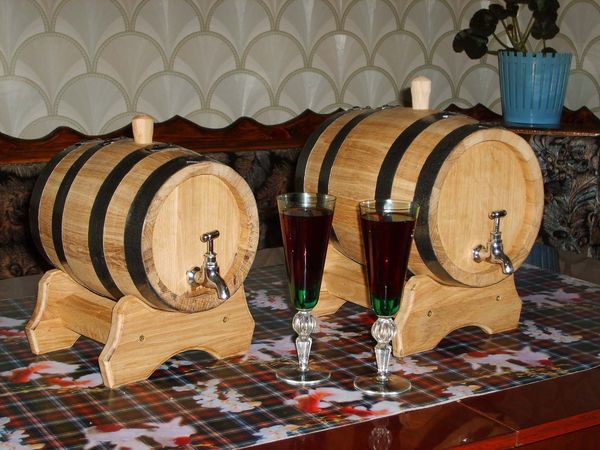
But it is extremely undesirable to use plastic ware, because the finished product may eventually acquire an unpleasant taste.
For storage of wine is better to take dark glass container. It is in this dish that the product will be best preserved and will not lose its taste.
To grind raw materials, you will need fruit crusher. The tool can be both manual and mechanical. For a small amount of production, manual production is also quite suitable, and if you need to process a lot of grapes, it is better to purchase an automatic unit.
The juice from the pulp is separated by pressWhich also can be not only manual, but also mechanical. It will also take a wine spirit meter to help evaluate the characteristics of the finished product.
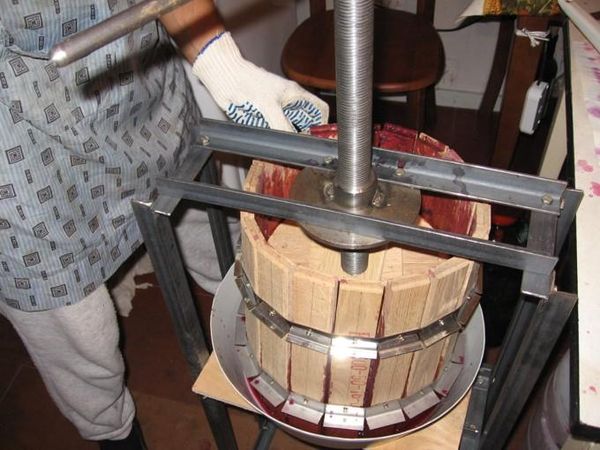
Recipe selection and preparation of raw materials
The choice of recipe depends on the tastes of the winemaker. If you want to make a completely natural drink, avoiding the addition of sugar, then you need to choose the ideal raw material. The grapes must be ripened, high in sugars. Over-grown berries are not desirable to collect.
Raw materials are sorted and discarded unsuitable berries. When choosing a recipe, one should take into account a small feature: Far Eastern grape varieties are sour. In view of this, it is possible to make a tasty drink not according to the first recipe, but only according to the one that involves using sour berries in its composition.
How to make wine from Far Eastern grapes at home
- First thing you need sort through the raw materials and separate the berries from the twigs. You need to select only ripe grapes, which contain in their composition a maximum of sugar and a minimum of acid.If you apply the immature fruits, then the finished product may turn out to be quite sour, which not everyone will like. In no case do not need to wash the berries selected for fermentation, because in this way the yeast is washed away.
- With the manual cooking option, if the crop is not too large, the fruit knead handsWearing pre-rubber gloves. So that the juice does not spray in all directions, hands try to keep as close as possible to the bottom of the container.
- To insects do not sit on the cooked mixture, it is covered with gauze, folded in several layers. At the same time, oxygen easily penetrates the tissue and activates the fermentation process.
- The resulting mass is placed in a warm room (the temperature should not be below 18 degrees) and incubated for 2-3 days. Determining the beginning of the fermentation process is not difficult: a characteristic white bloom appears on the berries, and there is also a sour smell.
- The next step will be separation of juice from the pulp. You can perform the procedure using a press or gauze. When small volumes of the mixture is filtered through cheesecloth, carefully obzhivaya pulp. Sugar is added to the finished juice and mixed thoroughly so that the crystals dissolve well.
- The resulting liquid is poured into the fermentation tank and a water seal is installed on it, which will serve as an indicator of how the process is going. The dishes are returned to a warm place and left. for 25-50 daysuntil the wine "replays".

At this time, the liquid must be separated from the formed precipitate. To do this, use a rubber tube. The resulting product is poured into glassware and sent to the basement for a couple of months so that it will infuse and acquire a deep taste, as well as a more intense flavor.
After this time, the wine should be removed, filtered again and poured into clean dishes. It is completely ready for use.
Far Eastern grapes have been used in winemaking. Its peculiar taste becomes a real highlight of the finished drink. However, the characteristics of the wine itself are directly dependent on the quality of the selected raw materials and on compliance with the preparation procedure.The winemaker must exactly comply with all the described technology, any deviation will certainly affect the taste of the drink.
